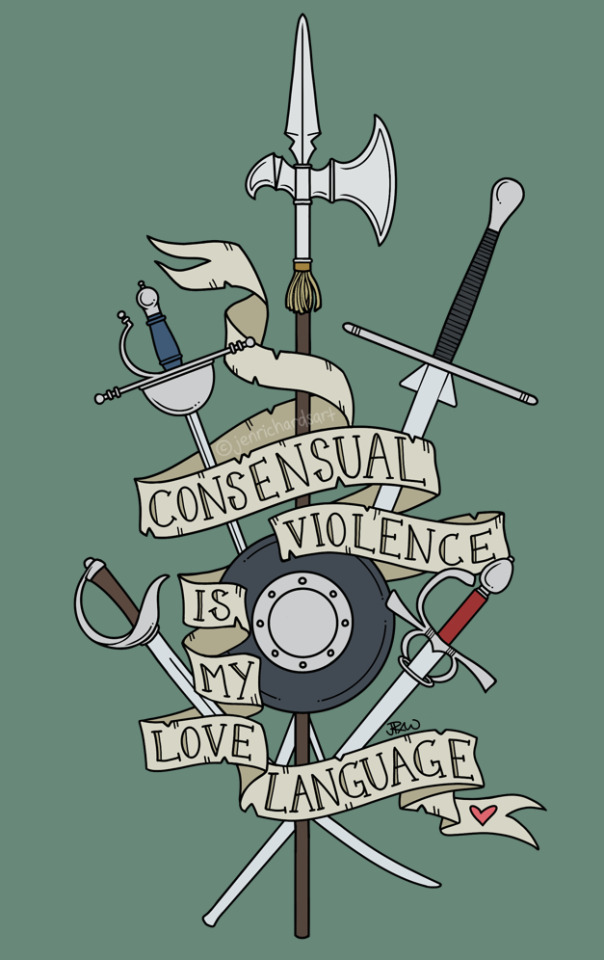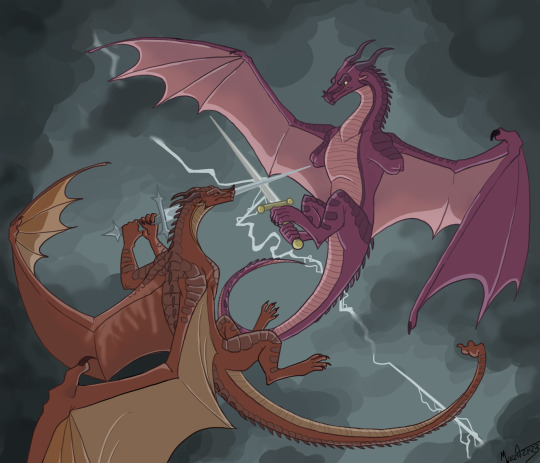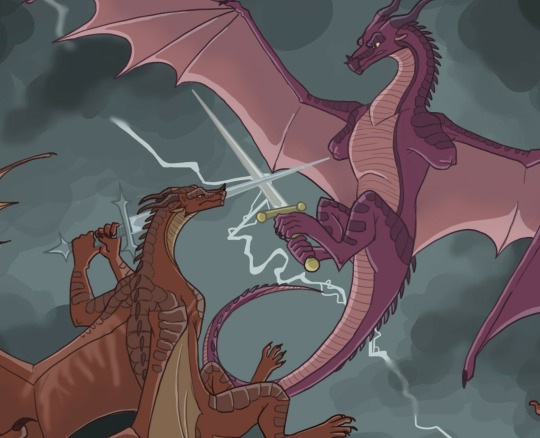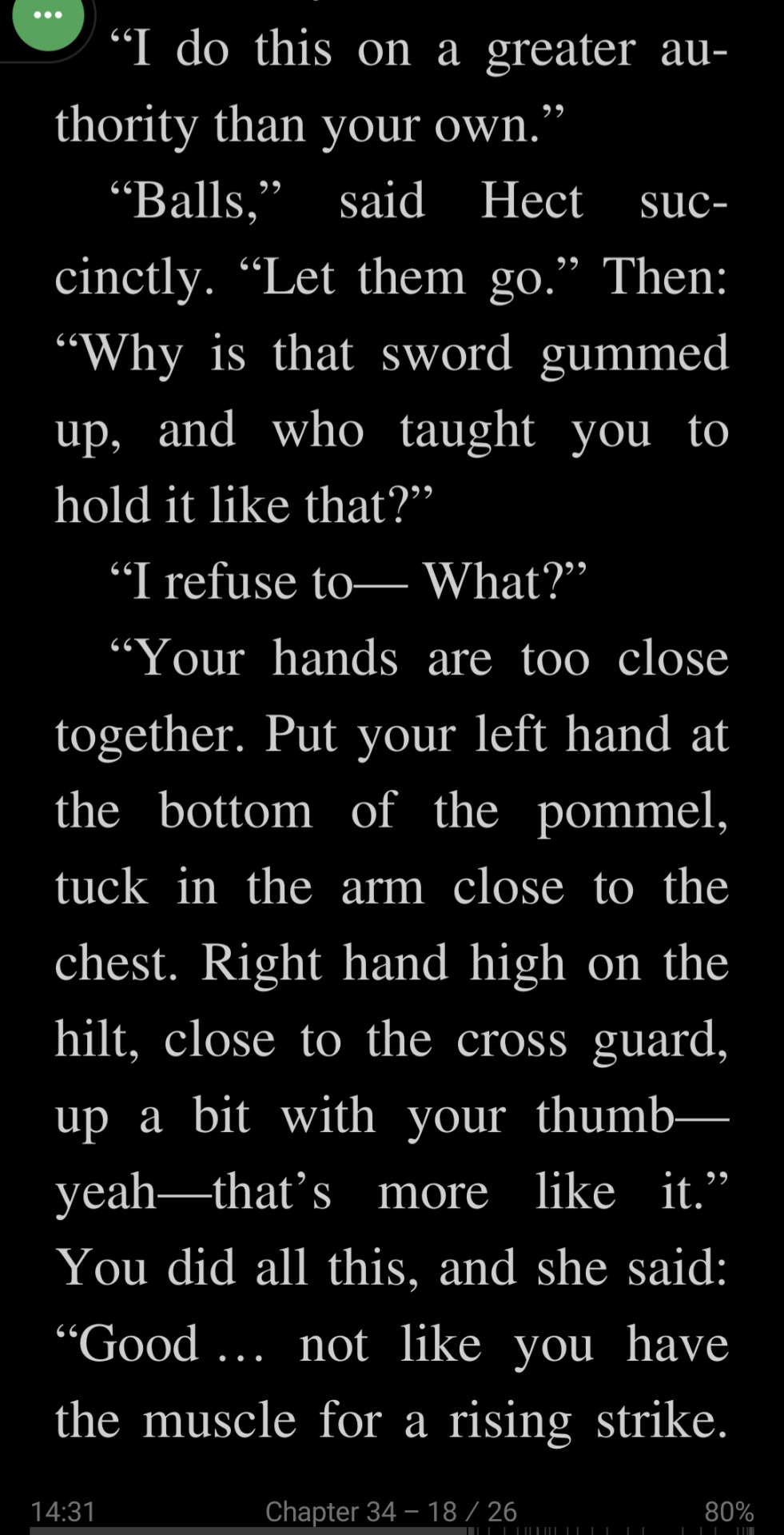#SwordFighting
Text

#piratecore#pirate#pirates#pirate aesthetic#nauticalcore#sword#swords#swordfighting#rogue#rogue class
682 notes
·
View notes
Text

Another one for the HEMA folks, or SCA or LARP or other collections of capital letters! It is available here if you are inclined to wear clothes or stick things on other things
If my clubmates would stop saying banger things like this I would be able to stop drawing piles of weapons and twisty banners. But for now it's a pretty fun challenge for my art so I'll allow it
#my art#hema#historical european martial arts#sca#larp#swords#longsword#rapier#halberd#sword and buckler#sabre#saber#smallsword#sidesword#love language#historical fencing#swordfighting
1K notes
·
View notes
Text
What is both Gideon's greatest strength and her greatest downfall?
Fencing.
#submission#Gideon#Gideon nav#GtN#GtN puns#TLT puns#TLT memes#Gideon the Ninth#The locked tomb#Swordfighting#Swordsmanship
873 notes
·
View notes
Photo

#star wars#episode 1#phantom menace#star wars episode i#obi wan star wars#obi wan#obi wan kenobi#kenobi#qui gon and obi wan#qui gon jinn#darth maul#lightsaber#duel#duel of the fates#Illustration#sci-fi#fantasy#swordfighting#drawing#art#fan art#fanart#sketchbook#portfolio#jedi#sith#prequel memes
4K notes
·
View notes
Text
sword misconceptions pt 1: longsword
Post series: shortsword | rapier | buckler | dagger | spear
so as I'm getting back into fantasy lit as a historical fencer, there are a lot of things I am noticing cropping up in swordfights that are inaccurate or flat out wrong. So i wanted to write a post for my fellow writers putting down a few things I've learned in 2.5 years of swinging the actual weapons around!
Disclaimer: i am not an expert. Additionally, many of the historical terms for weapons were not standardized (there was no "one" longsword/rapier/shortsword etc when we're talking about a weapon that existed for hundreds of years across an entire continent) so what I'm discussing under the cut is specific to the late medieval/early Renaissance European two-handed weapon with a simple hilt/crossguard and with a blade length around 3 feet -- what D&D calls the longsword, or in older editions the bastard sword (although if we want to get picky about it, bastard swords should have shorter handles than longswords -- but I wrote this post as a writing reference so names are beside the point. you can call the swords whatever you want in your story, anyway).
Misconception 1: longswords are heavy.
Older editions of D&D had these weapons at 6 pounds, which is about 2x too heavy. 5e has them at 3 pounds, which is exactly right. Your average longsword is between 2 and 4 pounds, and a well-made one will be balanced such that you barely feel it. Pound for pound, they are heavier than almost all one handed weapons (except some rapiers but we'll talk about that later), but between their balance and the fact you wield them in both hands, their weight is likely not going to be a prohibiting factor for most characters. Everyone who can pick up a wooden baseball bat can pick a longsword up and swing it. A weak or out of shape character will struggle for wielding it for lengths of time, though.
Misconception 2: longswords are slow.
You're 1) thinking of a zweihander and 2)zweihanders aren't slow, either, but we'll get to that later. Longswords, wielded properly in both hands, are lightning fast, with a skilled fencer that's opened their opponent's defense often able to land 2-4 hits before a director even registers the first hit and calls "halt". And there are two components to speed: actual velocity, and distance. Longswords are -- well, long. Even if you can't swing it as fast as a little knife, the fact that it's three feet long means you're closing to target much faster compared with a shorter weapon, because you don't have to do as much footwork to get into, or out of, striking range.
Misconception 3: you can wield a longsword in one or both hands.
I mean, you could. But a one-handed wield robs a longsword of a lot of its dexterity, grace, precision, and yes -- power. You want two hands on this thing. Your dominant hand goes closer to the crossguard and it's what generates your power and edge alignment. Your offhand on or near the pommel is where your dexterity and fine steering is. Switching or removing either of these hands feels weird and you are also way more likely to get disarmed just by trying to parry with one hand.
Misconception 4: swordfights are about dodging.
You have two realistic options when someone is swinging a longsword at you: parry or step out of range. You do not duck. You do not jump. You do not sway, roll, or do backbends. All of these things will 1) rob you of necessary structure to riposte, 2) leave you wide open for a renewed attack or remise, and 3) leave your most important tool for not getting hit -- your SWORD -- too far off target to help you. Yes, all of these things look super cool and may fit depending on your style and setting. But if you're going for realism, YOU PARRY.
Misconception 5: you can be fast or strong but not both.
Ok, this is more a pet peeve about martial arts in general but: you cannot be fast without a certain base amount of muscle. You CANNOT. Small people with no muscle are slow. They have to take huge, looping cuts to compensate for their lack of muscle and leave huge openings while they do it. Small people who do well at the sport are often very quick because they have to train the heck out of footwork to outwork bigger opponents, but that only comes with TRAINING. It's not a "small people are automatically dex builds" thing. And while big muscly guys are often slower, they also 1) have less distance to move to close to target, which makes them "faster" even if they are moving a tad slower and 2) they're also often fast as balls, so you can judge virtually nothing about an opponent based on their body type except for their reach. A good, big longsword fencer will often have really fast handwork because most don't do well in longsword fencing without speed.
Let me know if there are any lingering questions I missed! I may think of more later, but I hope this was helpful for now :)
#writing reference#writing#swordfighting#swords#historical fencing#fantasy writing#writing fiction#creative writing#longsword#hema#historical european martial arts#Martial arts reference#Sword reference
138 notes
·
View notes
Text
A Glimpse of Past Glory by masked

🔒 A Glimpse of Past Glory
by masked (@hamburgergod)
T, 1k, Wangxian
Summary: The condition is that they can’t use their cultivation since the ghost was a non-cultivator and wants a normal sword duel. This was all fine and well until they realized that none of them could win against him, lasting no more than few blows before having their swords and dignity flung out of their hands.
“It’d be easier to just eliminate him,” Lan Jingyi mutters. “Otherwise we’ll be here forever.”
“Jingyi,” Lan Sizhui scolds.
Lan Jingyi is right, of course, but the whole point of elimination is that it’s the absolute last resort. Although it’s not within their own ability to liberate this ghost, there’s…
Lan Sizhui glances at Wei Wuxian, standing idly by while he picks at under his fingernails.
-
A glimpse of Wei Wuxian and the Gusu Lan disciples on a night-hunt.
Kay's comments: Short and sweet, the juniors are getting a glimpse at Wei Wuxian's amazing swordfighting-skills and of course, Wangxian are working dilligently towards Wei Wuxian growing a new golden core.
Excerpt: Finally, Lan Jingyi’s voice projects over all of them, asking the one big question on their combined minds.
“Why did you ever stop using your sword?” he questions. “Demonic cultivation might be useful and convenient, but—but you’re so good! You’re obviously skilled with the sword! Not cultivating with it is such a waste!”
Wei Wuxian raises his eyebrows. He opens his mouth, and everyone quietens to hear his response better. What was the real reason for Wei Wuxian to abandon the way of the sword and start the era of Yiling Laozu’s demonic cultivation when he was already so powerful?
“I,” Wei Wuxian answers, “hate sweating.”
pov alternating, post-canon, established relationship, bamf wei wuxian, swordfighting, short & sweet, fluff, domestic fluff, slice of life
~*~
(Please REBLOG as a signal boost for this hard-working author if you like – or think others might like – this story.)
#April 2024#Wangxian Fic Rec#The Untamed#Wangxian#MDZS#Kay's Rec#short fic <15k#teen#masked#A Glimpse of Past Glory#pov alternating#post-canon#established relationship#bamf wei wuxian#swordfighting#short & sweet#fluff#domestic fluff#slice of life
97 notes
·
View notes
Text


[Pictured above is that of SkyWing General Sparrow and ex-captain Searing engaged in sparring with swords. They are highlighted by a lightning storm that rages around them.] (SFAU)
-Annual report recorded by SkyWing scribe, Secretary, to superior, Scalding, approx. 15 years after the War of SandWing Succession began-
"This war has afflicted the tribes of Pyyrhia in way no other disaster has. Every of them raked to their core fighting for the SandWings and their royal squabbles.
.
The MudWings are nearly extinct. The IceWings sealed themselves behind their borders. The SeaWings have all turned to high-seas crime and piracy. The NightWings are only alive because they've enslaved most of the RainWings. (I hear their labor is used for making that awful thick and oily armor they wear) The SandWings themselves are all starving. I wonder what guilt they feel for the war they started? Any at all? The princesses better be sorry at least. I'm happy one is already dead.
.
The SkyWings survive. Not that we dont have our own problems though. The Queen has gone absolutely mad with gladiatorial gluttony. Drunk on violence. Her generals, Sparrow, Vermillion, Bloodstone, and Peregrine have taken over in her mental absence, it seems. The rest of us train. We protect our border and fight with vicious vigor. Iron sharpens iron. Flame adds to flame. We spar to keep us in practice in the event we are attacked from a force on the outside, or within. We'll be ready nontheless. The SkyWings will not fall to this war. Not to anyone. Not even to ourselves."
-end of report-
#sfau#wof au#wof sfau#wofau shit's fucked#yes thats what the acronym stands for#wof art#wings of fire#wings of fire ocs#wings of fire art#dragon art#digital art#dragon artist#swordfighting#sparring
305 notes
·
View notes
Text
Behind the Scenes Swordfighting Stunt Choreography with Lockwood and Co
youtube
for @charmquarkstrangequark - a compilation of all the bts swordfighting choreo we got for l&co. Hope you enjoy this :)
#lockwood and co#lockwood & co#lockwood and co netflix#Youtube#sword fighting#swordfighting#stunt choreography#lockwood and co video#lockwood and co behind the scenes#lockwood and co cast#philip d’orleans#rhianna dorris#cameron chapman#ruby stokes#ali hadji heshmati#paddy holland#rico vina#edits in the palace#videos in the palace#not a lot of footage out there sadly#but still the bts stuff is really cool!’
413 notes
·
View notes
Photo

comm for @/felixdabear on twitterrrr
28 notes
·
View notes
Text

The most realistic swordfighting detail that Muir gets right in the whole TLT series so far is how Cam cannot bear seeing Harrow threatening them in a horrible stance and takes onto her to correct her grip
287 notes
·
View notes
Text

Mondo poster for 2017's Star Wars: Episode VIII – The Last Jedi.
#star wars the last jedi#mondo poster#reylo#rey#kylo ren#ben solo#snoke no more#throne room#red all over#great scene#action#swordfighting#lightsaber#dark side#guards#2017#rian johnson#star wars sequel trilogy#2010s#star wars#rey x ben#rey x kylo#red room#fight#cool#TLJ#star wars tlj#great fight scene#the best one#team up
147 notes
·
View notes
Text

People have described my new combat kit as having a "FromSoftware boss" kind of vibe.
75 notes
·
View notes
Text

A silly little design I made for my historical fencing club! We’d been discussing mental health in HEMA and my clubmate said this banger of a quote and I had to immortalize it. You can get it on stuff here!
Turns out I do love drawing swords
#yes I drew my actual feder#my art#hema#historical european martial arts#swordfighting#longsword#rapier#historical fencing#buckler#sword and buckler#sword#sidesword
512 notes
·
View notes
Note

Do you know what this style of blocking is called? Or even how to describe it? I'm not sure "holding sword parallel and using other hand to support it" covers the action.
Take this with a grain of salt, because I can't find the references right now, but I think that's just, bracing. Gripping the blade of the sword is often called, “halfhanding,” but by itself the term is usually associated with gripping the blade to assist with precision thrusts. (So, trying you'd halfhand your sword to thrust into a weak point or gap on your foe's armor.) Parrying, or blocking with a sword like this is a little unusual, and (without the full context of the original image) I almost wonder if this is an example of something you shouldn't do.
Now, with the image's detail as low as it is, it might be illustrating a very specific technique. In the case of single edged swords, the, “best,” place to parry an incoming strike is with the back of the blade. Where you've got a heavy chunk of relatively solid metal, without the danger of taking a blow on the flat of the blade. (I can't really tell, but it does look like the defender is wielding a falchion, which were single edged swords. That would also date this image to somewhere between the 13th and 16thcentury. Which, at glance seems right, but I wouldn't swear to that estimate. The design of the falchion would put it later on that spectrum. The design of the attacker's sword seems consistent somewhere in that timeframe as well, but it's genuinely difficult to judge, and while I know I've seen this picture before, I cannot remember where.)
On double edged swords, like the attacker is wielding, the best option for parrying an incoming strike is with the flat. Obviously, that's not ideal, because blows to the side of the blade do risk damaging it, especially when it's halfhanded like this and your opponent is performing a heavy hewing strike as depicted, but that's a risk. If you try to block or parry edge-to-edge, you will damage your sword, without fail. (Also, if you try to block an incoming attack edge-on-edge while halfhanding, you will injure your hand.) If you do attempt to block or parry edge-on-edge both swords will suffer damage called, “gouging.”
Remember that a sword is, basically a three to four foot long razor blade. So, while the blade itself is a relatively solid chunk of steel, the cutting edge is quite delicate and fragile. Gouging on the blade occurs whenever the sword is used against something significantly harder than a person (and can even occur from striking bone.) Abusing your sword will destroy it, and the conventional image of blade-on-blade parrying is extremely destructive to the weapons involved. This almost never occurred historically, and when it did it was either an act of desperation or incompetence.
That image of blade-on-blade parrying comes from theater. Ironically, flat edged props are much more durable than real swords, and blade-on-blade parrying is much easier and safer on stage than the historical swordfighting techniques they stood in for.
While it's not the case in this image, some specific swords (intended for combat) existed with unsharpened blades. The most famous of these is probably the Estoc (or Tuck.) These did not always have sharpened edges, and even when they did, that wasn't the important part of the weapon. Dating to the 16thcentury, these were designed to deliver thrusting blows that could (hopefully) punch through gaps in a foe's plate armor. In this specific case, blocking edge-on-edge (or even half-handing the weapon) wouldn't matter, because there was no delicate blade, (only the tip was sharpened.) Some surviving Estocs even have heavy ridges running down the flat of the blade, giving it a cross-shaped (or, in some cases, triangular) cross-section. This was specifically to improve the structural integrity of the sword while thrusting. Though it would mean that you could probably block or parry an incoming attack as depicted in the image while wielding one (though, neither of the swords in the image are estocs.) In this specific case, there wouldn't even be much downside to edge-on-edge blocking, because the estoc is unlikely to suffer meaningful damage, while the attacker's blade will likely suffer gouging.
So, if this was intended as a depiction of something you should be doing, I suspect it was to demonstrate how to parry an incoming sword strike with a falchion. Historically, falchions tended to be fairly cheap infantry weapons so this may have been intended for teaching conscripted infantry. With the image itself being for the instructor's benefit more than the conscript's. A lot of the surviving codices of late medieval and early modern sword combat were intended for professional combat instructors. So, it is reasonable to assume that this image is from one of these sources.
-Starke
This blog is supported through Patreon. Patrons get access to new posts three days early, and direct access to us through Discord. If you're already a Patron, thank you. If you’d like to support us, please consider becoming a Patron.
264 notes
·
View notes
Text
just a lil bink bonk from today's medieval festival
#plague doctor#plaguecore#bubonic plague#medieval#plague#plague mask#plague nurse#plagueposting#plaguesona#the black death#medievalfayre#medievalfestival#sword re-enactments#swordfighting
94 notes
·
View notes
Text
sword misconceptions part 2: shortsword
Post series: longsword | rapier | buckler | dagger | spear
so as I'm getting back into fantasy lit as a historical fencer, there are a lot of things I am noticing cropping up in swordfights that are inaccurate or flat out wrong. So i wanted to write a post for my fellow writers putting down a few things I've learned in 2.5 years of swinging the actual weapons around!
Disclaimer: i REALLY wanna emphasize this because in my last post someone decided to get cute (and wrong) about this. Historical terms for weapons were NOT STANDARDIZED. There as no "one" longsword/rapier/shortsword etc when we're talking about a weapon that existed for hundreds of years across an entire continent. And "shortsword" especially is not a specific term. As how you use weapons are governed more by their properties than their names, you can generalize many things that may not have historically been called "shortswords" under this term. There are like five or six different weapons which have distinct traditions in HEMA which match the fantasy game description of "shortsword". So I'm talking here about any one-handed, straight-bladed, double-edged sword with a (mostly) simple hilt/crossguard and a blade length typically between 2 and 3 feet. As "shortsword" is a generic and not a specific weapon descriptor, this covers what we in HEMA call arming swords, gladiuses, some messers, and probably a bunch of other types of swords I can't think of right now (the "simple hilt" rule is because I'm putting italian side swords and scotch broadswords in a different category. They feel really really different to wield than an arming sword/messer, and classing them as shortswords feels wrong).
Misconception 1: dual wielding shortswords is safe and effective.
When you dual wield, you really REALLY want different length weapons in each hand -- like a dagger in the offhand. Otherwise they cross over each other, get in each other's way, and generally slow you down and mess you up. We'll dual wield matching weapons for fun sometimes, but it strangely feels very unsafe and most of the time you have to resort to windmilling (getting stabbed in the chest as a result). Is this a skill issue? Maybe partially, but there's another reason to have a shorter weapon in your weaker hand, and it's physics. Maintaining parry structure and speed in a full size blade is really hard to do in your weaker, non dominant hand, so if you're going to hold an offhand weapon, you want it to be something that can't be easily wrenched or beaten aside, and instead something that has more leverage (like a short lil dagger!) so that you can turn aside incoming hits without the sword getting blasted aside. If you have a character that's really, truly ambidextrous they might be able to legitimately dual wield full length weapons, but most of the time this one just looks silly.
Misconception 2: since it's a one handed weapon, you shouldn't use your nondominant hand at all.
One of my favorite things about slashy one handed weapons like messer and arming sword is that your offhand still gets a job, but it has to diversify its job prospects! Most "shortsword" traditions aren't like modern fencing the way saber or rapier are, where you only use your sword arm. In messer, which is a very grappling-focused system, your offhand's job is to grab your opponent's arm, put them in joint locks, seize the opponent's blade after you've locked it in a bind, and otherwise be a nuisance. In arming sword and buckler, the offhand holds a lil shield, whose job then becomes to suppress the opponent's sword by shoving the buckler into a bind, protect your sword hand, parry afterblows, or deny entire target areas to your opponent. Most shortswords are NOT weapons designed to be used without backup from your other hand in some way. Don't just have your character hacking an arming sword around. Have them close distance, grapple hard, yank, push, armlock, trip. Shortswords don't grant the luxury of distance longswords can. You have to be up close and very personal.
Misconception 3: shortswords are faster than bigger weapons.
And in close quarters, they sure as hell ARE faster, because that's where longswordsget jammed up by proximity. But "close quarters", in this case, is "less than five feet apart". I'm talking CLOSE. Correct to: measured by speed of the hand, you can swing a shortsword more times per minute than a longer weapon. But a few things equalize that: their length, so you have to step in to score a hit, making them slower; and their relative lack of mass. This seems counterintuitive, but think of it this way: cutting a longsword around often just involves redirecting its velocity, which is already trying to continue forward due to its mass, in a different direction. Cutting a shorty around often involves restarting the whole cut: it's probably stopped against your opponent's weapon or bounced off, so you have to re-engage your swinging muscles to get it moving again. This is why when you watch sword and buckler or messer fighting, fencers will often avoid binding their blades at all costs and instead repeatedly disengage under or around each other's blades instead -- because in this situation, with good footwork, the sword actually FEELS its proper speed. A two-handed sword is going to be faster and more nimble than a one-handed sword in almost all cases UNTIL you get close enough that the longsword wielder can no longer move their sword properly -- which is well within the longsword's cutting range.
Misconception 4: shortswords are for weaker characters than longswords.
My beef with d&d 5e is that every sword SHOULD be a finesse weapon with a strength prereq to wield. Yes, shortswords ARE lighter than longswords, but only by about a pound. Add that to the fact that you can only use one hand to hold it and the fact that you're probably trying to swing it faster due to being practically in the other guy's teeth, I find short swords actually more physically taxing to wield than longswords. They burn out your dominant shoulder BAD and there's no way to relieve the weight on your arm without dropping your sword and probably taking a point to the chest. Yes, they are easier to pick up. They are harder to fence/fight with for extended lengths than longswords, at least to me.
That's all I can think for now! Hmu with any questions or confusions.
#writing reference#writing#historical fencing#historical european martial arts#hema#creative writing#shortsword#longsword#reference#Sword reference#Swordfighting#swords
53 notes
·
View notes